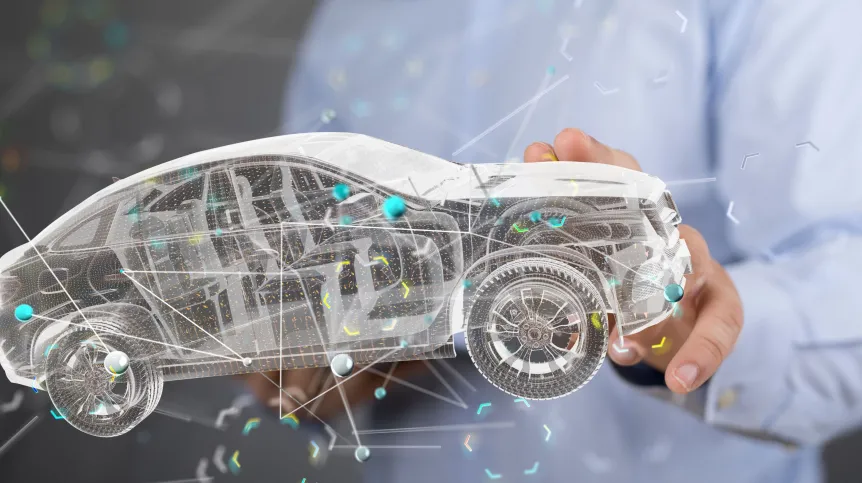
The appearance of autonomous vehicles on the roads may occur later than originally expected, the head of the Motor Transport Institute, Professor Marcin Ślęzak tells PAP. He points out that this technology still requires improvement, and its full use requires changes in infrastructure and regulations.
Experts from the Motor Transport Institute have been pointing out for years that the development of autonomous vehicles (those that will ultimately not require a driver) is the answer to many problems of the modern automotive industry. The vehicles are expected to be, among other things, a cure for traffic jams, lack of parking spaces, smog, as well as problems related to the shortage of drivers in the transport industry. And although they originally assumed that fully autonomous vehicles would appear on Polish roads in 2030, they now admit that it will not happen that soon.
According to the Motor Transport Institute's preliminary estimates from 2017, the first fourth-generation autonomous vehicles (on the Society of Automotive Engineers' five-level scale) were expected to appear on the market in 2025. The mass implementation of fifth-generation vehicles, i.e. those without steering devices, was expected to take place five years later.
'Although the vision of such vehicles arouses the imagination, they may become common on the roads later than we originally expected,’ admits Professor Ślęzak. He adds that commercial cars with the fourth level of autonomy are currently being tested, and some manufacturers offer ready-made second and third level solutions.
'However, it should be taken into account that this technology still requires improvement, and its full use depends on the development of infrastructure and harmonisation of regulations at the European level,’ Ślęzak says.
The head of the Motor Transport Institute points out that the refinement and implementation of these regulations is important to ensure the safety of passengers of autonomous vehicles and other road users. However, in his opinion, such vehicles will help reduce the number of traffic accidents.
'The analyses of the Polish Road Safety Observatory of the Motor Transport Institute show that the human factor is decisive in approximately 90 percent of accidents. Research also indicates that thanks to intelligent vehicles, the number of road accidents can be reduced by approximately 30 percent. Referring to the preliminary statistics for 2023, this would mean 6,000 fewer accidents, a reduction of the number of victims by 500 people and multi-billion savings due to the consequences of these events,’ says Ślęzak.
He adds that another advantage of autonomous vehicles is greater transport efficiency. 'Currently, a typical private car is parked 95% of the time. Autonomous vehicles, used in carsharing and public transport, will be in motion all the time, reducing the number of individual vehicles on the road and thus street traffic jams,’ he says.
According to estimates cited by the Motor Transport Institute, drivers in the largest Polish cities lose approximately 100 hours in traffic jams every year. Autonomous vehicles can help save this time. Moreover, as experts point out, such vehicles can help people who are unable to drive a car, for example, due to age or disability. In Poland, this applies to several million people.
The Institute also draws attention to the shortage of professional drivers that has been felt in Poland for many years. The Motor Transport Institute's calculations show that the shortage reaches approximately 200,000. This, according to experts, is another area where autonomous vehicles can help.
'Automation of selected areas of the economy means measurable benefits. Transport and logistics alone generate 7 percent of GDP and are responsible for 6.5 percent of employment. Automation, especially in the case of trucks, can also reduce the demand for drivers by up to 10 percent and will additionally help reduce the costs related to fuel consumption and vehicle operation by several billion zlotys,’ says Professor Ślęzak.
One of the most important problems of autonomous transport is currently the maladjustment of road infrastructure and the lack of appropriate legal regulations in Poland and Europe. However, legislative actions to facilitate testing of autonomous vehicles on roads have already been initiated.
According to Aleksandra Rodak from the Competence Centre for Autonomous and Connected Vehicles of the Motor Transport Institute, it is crucial to create a full catalogue of new regulations governing the movement of autonomous vehicles, including cross-border transit. In her opinion, it is also necessary to solve the issue of liability in the event of an accident and gain social acceptance. Rodak admits that not everyone is yet ready to entrust their safety to artificial intelligence. (PAP)
PAP - Science in Poland, Marcin Chomiuk
mchom/ agz/ kap/
tr. RL













